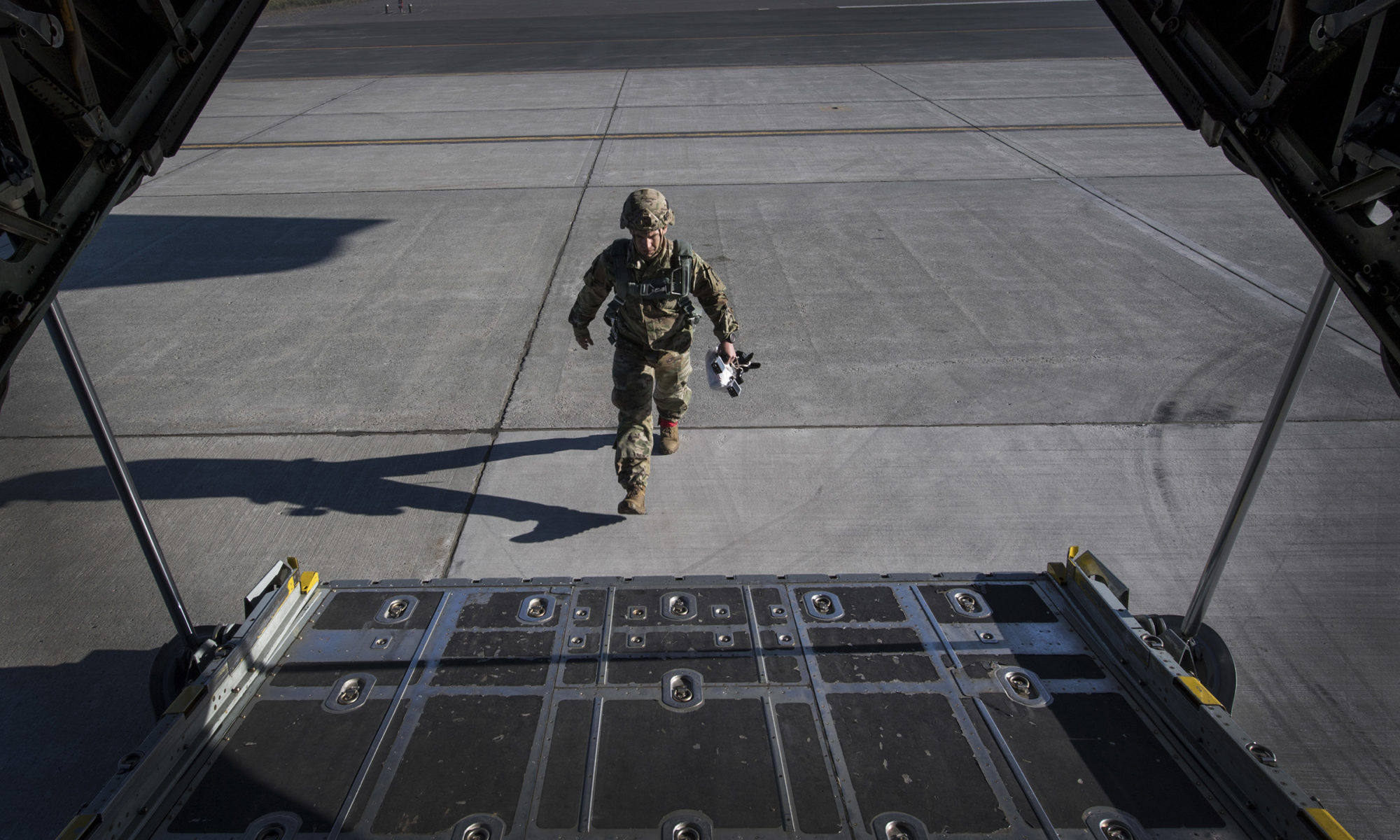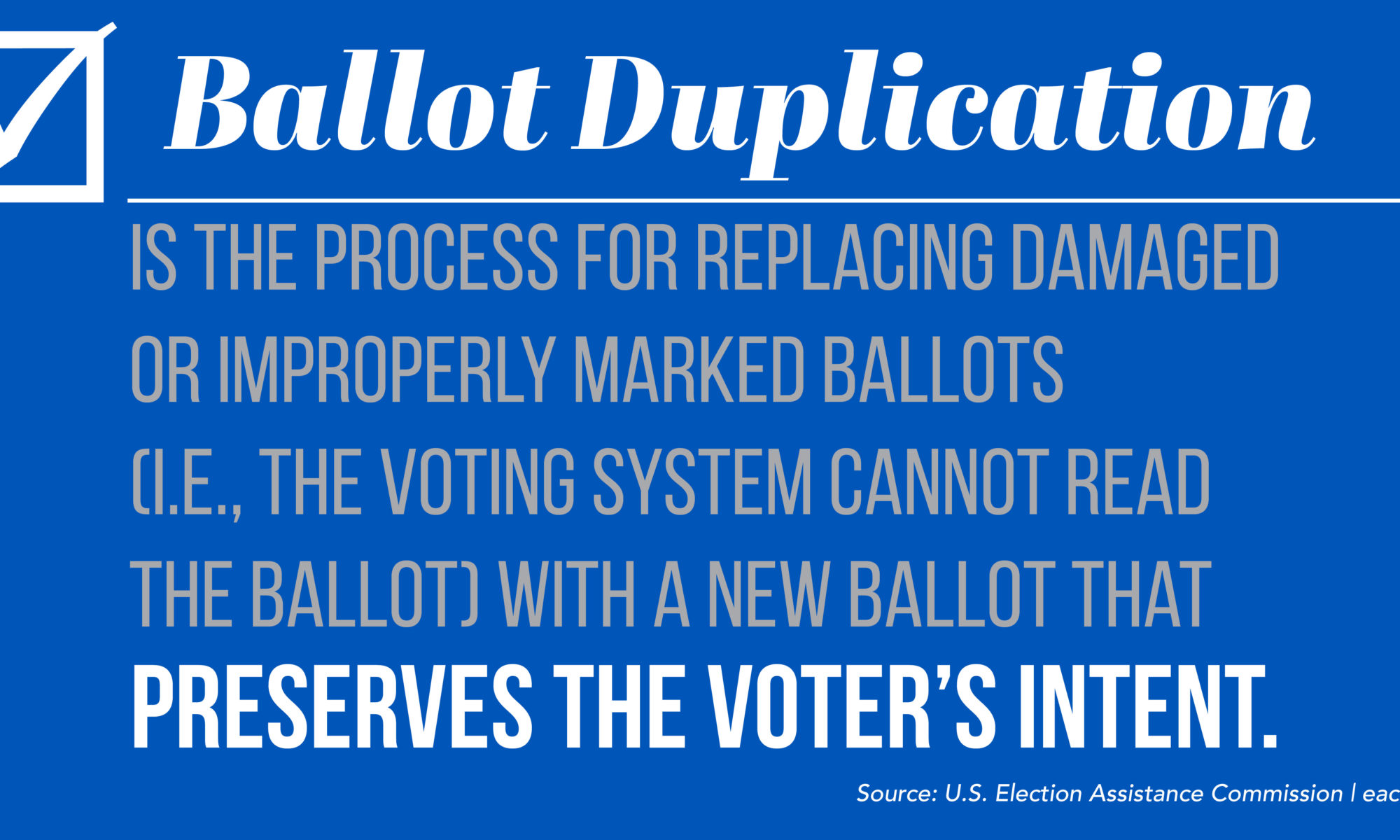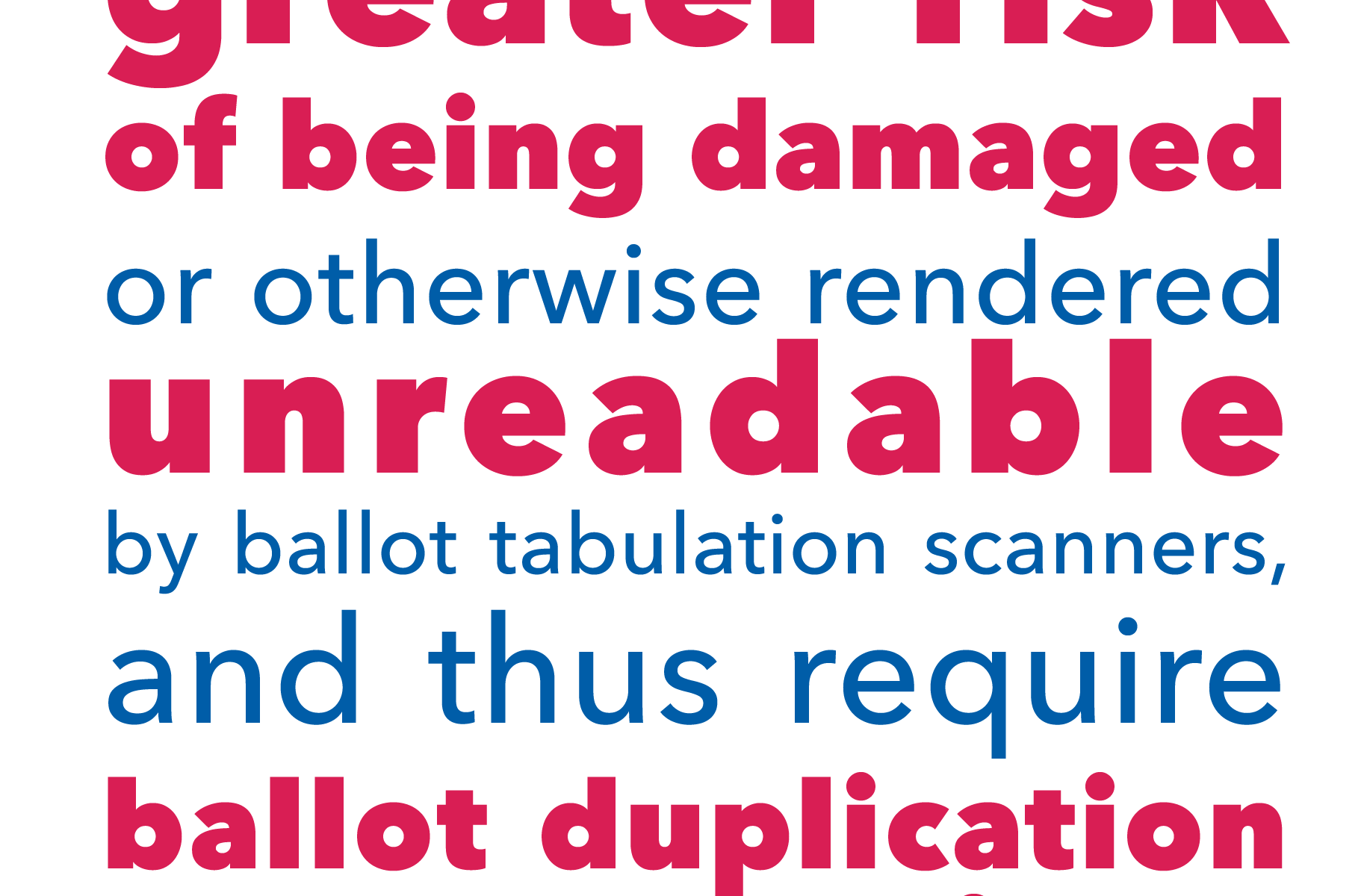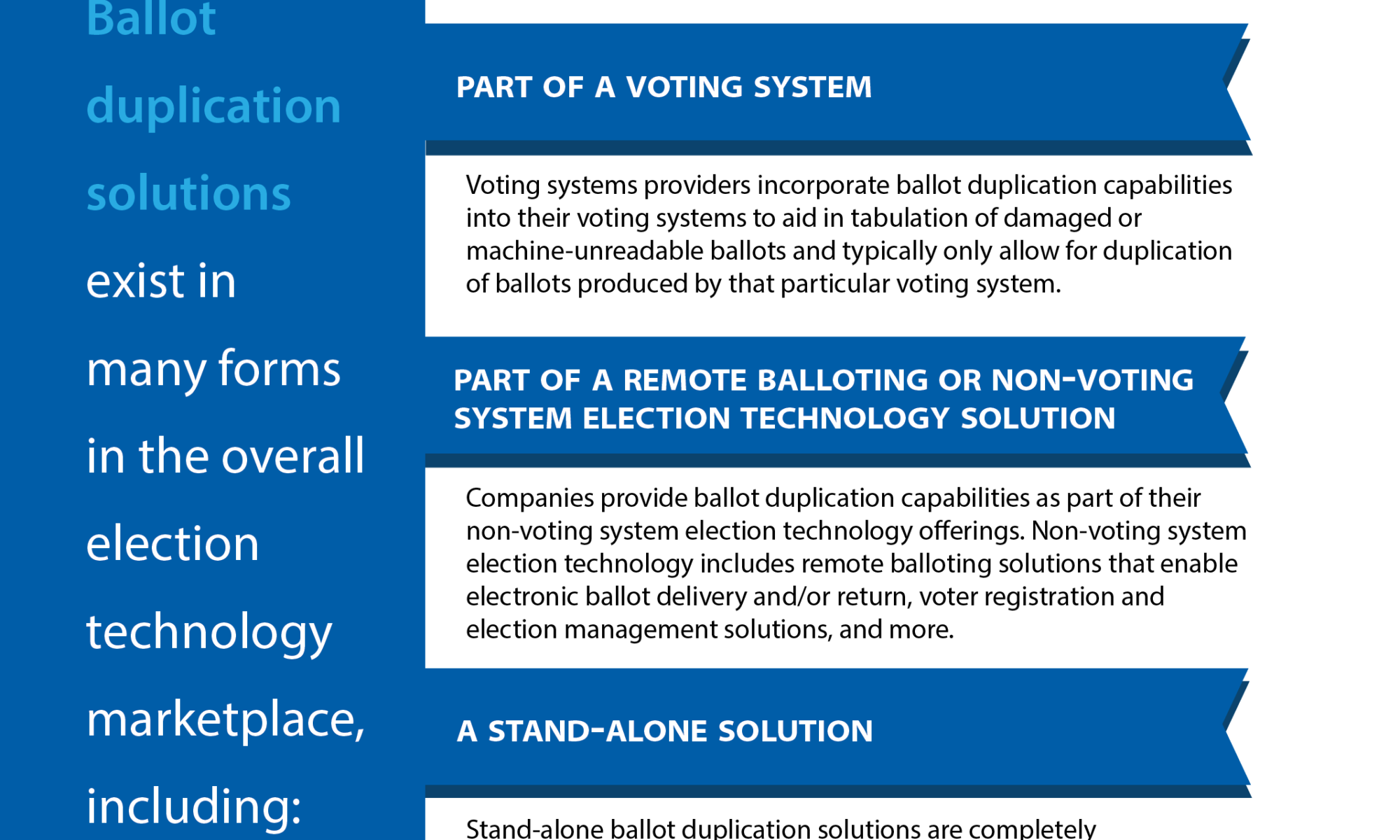In the spring of 2020, the members of the Sustainability of UOCAVA Balloting Solutions Subgroup(SUBSS) of The Council of State Governments Overseas Voting Initiative (OVI) developed recommendations for duplication of damaged and/or machine unreadable ballots. Our Working Group of state and local election officials wanted to aid other election officials and inform the greater election stakeholder community as contingency planning for the 2020 election began to unfold. These enhanced, pandemic-era recommendations built upon the previous work of the OVI on ballot duplication.
After assessing the 2020 election cycle in relation to lessons learned regarding ballot duplication and other post-election processes, including how they were discussed in both social and mainstream media, the OVI SUBSS Working Group members developed the following recommendations:
Ballot Duplication Technology
- In addition to continuously evaluating emerging ballot duplication-specific technology solutions, election officials could also explore the possibility of using dedicated ballot marking devices to aid in the ballot duplication process. In an effort to move away from completely manual ballot transcription processes, many jurisdictions reportedly did this successfully in 2020.
Ballot Duplication Observation
- When broadcasting ballot duplication processes, captions, narrations and other explanatory information should be given by election officials to provide context for observers given their curtailed ability to ask clarifying questions in person. This will also help provide context to the media and aid in fighting attempts at video manipulation and disinformation.
- Election officials should keep any recordings of the duplication or other post-election processes so that they have the original footage should a manipulated version show up online.
- Officials should consider keeping a record of remote observers, either by having them agree to observer guidelines and collecting their information ahead of time, or by tracking observers’ internet service providers so they can be tracked down if they violate observer principals.
- Educational materials on post-election processing, including ballot duplication, shared by election officials should include a spot for signatures of both in-person and remote observers indicating they have read and understand the materials and are trained or certified to begin observation.
- Election officials should consider observer area signage and room layout with clear physical distancing markers. Additionally, cameras should be considered for both on-site and remote observers who must keep physical distance but find it hard to see the process when distant.
- Election officials should provide staff availability for observer questions both on-site and via remote access as well as to implement a process for advance sign-ups, limiting the number of observers at one time.
- Chain of custody and security processes and procedures for ballot duplication and post-election processing should be reviewed by election officials and strengthened as appropriate to address evolving risk mitigation needs.
If you have any ballot duplication questions or suggestions for additional recommendations based on your experience, please reach out to us at [email protected]. We’d love to hear from you!






